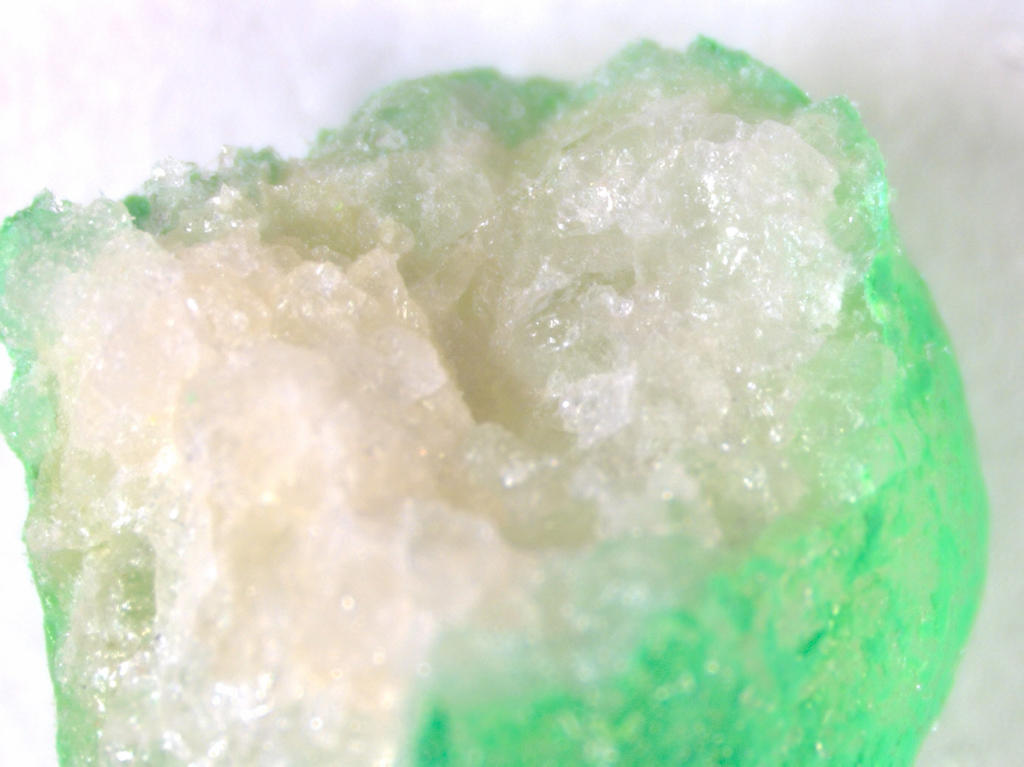During my summer internship, I saw hundreds of fabulous garments, shoes, and accessories arrive for the Spring 2016 exhibition on fashion designer Todd Oldham. As an intern in the Costume and Textiles Department and a textile conservation student, I was asked, for one of my projects, to research how the materials going in the exhibition space might react with the clothes. Pollutants that we live with every day, such as car exhaust, bright light, and dust, can do irreversible damage to art. An important part of textile conservation is making sure that objects are not exposed to sources of degradation.
Conservators have tested and reported on the properties of thousands of fabrics, paints, and plastics that are commonly used in museum displays, but we were researching something that wasn’t listed in any of the textbooks or databases. We were looking into using aquarium gravel as an element in the exhibition design.
Since there wasn’t a lot of information about the above-water behavior of aquarium gravel, I had a lot of questions. Would the gravel behave like normal rocks? What was it coated in, and would that attract more dust or react strangely in any way? Would it release dust if people played with it or stepped on it, and what would those particulates do to the clothes? Would we have to wash it or coat it in something else before it touched the clothing? What on earth made it so green?
Though I am not a chemist, understanding how substances will react with each other is an important part of conservation, and for this exhibition that required wading into the world of aquarium substrates.
Companies are unlikely to reveal their trade secrets, so we tracked the development of the pigments and coatings by reading the patents that the company had filed. These describe new innovations in detail, listing all the steps in the sealing process. In addition to patents, businesses are required to release information about potential hazards and instructions for safe use for their products in material-safety data sheets (MSDS), and there was one for our brand of Day-Glo green aquarium gravel that told us about the material underneath the color and coating.
Any suspicious chemical components can also be cross-referenced with the CDC, OSHA, and, if we were really worried, the International Association for Research of Cancer. Most of these organizations described how miners, factory workers, or construction workers might be affected, so we were in new territory for costume and textiles.
During the process, we discovered some surprising things about aquarium gravel. As the gravel was not intended for use in the open air, the manufacturer wasn’t required to state that the dust it produced could cause respiratory issues or damage the art on display. This took the investigation in a whole new direction.
Now that we had figured out what damage the gravel might do, the new challenge was figuring out a way to prevent that damage from occurring. This led me to other fields which might have dealt with similar problems. How do people with gravel driveways keep the rocks from washing away? How would a set designer prevent gravel and sand from escaping a theater stage and getting into the audience? How do sculptors, designers, fabricators, and other creative professionals deal with loose aggregate?
There’s another 10 months before the Todd Oldham show opens, and as of yet there’s no final conclusion about how the gravel will be contained on the platforms. We’ve continued to test for photosensitivity and lightfastness and are about to mock up a platform to monitor how the gravel releases dust.
The little stones have also acted like seeds, growing acid-green ideas in everyone’s minds. The exhibition platforms are going to be green, and while aquarium gravel would be ideal, some of the other alternatives proposed include Astroturf, 1970s shag carpeting, old clothes dyed bright green and heaped on the floor, piles of yarn, packing peanuts, tennis balls, plastic beads, miniature fake fruit and vegetables, toy gemstones, and from a nice gentleman who worked at Home Depot, “Just put the gravel in bar-top epoxy resin, so it won’t get crushed. That stuff is strong. People dance on bars all the time.”
So where are we now? We’re testing for new and creative ways to install 2,000 square feet of Day-Glo green gravel. Models in Todd Oldham’s shows danced their way down the runway, so who knows, some bar-top resin might be just the ticket.
What would your solution be? If the floor has to be acid green, what would you cover it with?
Anna Rose Keefe
Museum intern in costume and textiles conservation, 2015
